Did the title get your attention? You might be wondering why it would be important to be able to recognize and understand the difference between AI (artificial intelligence) created recipes and their representative images, and recipes and their photos developed by real humans? By the end of this article, we hope you will see why it’s important, and be able to differentiate.

- AI Has Its Place
- Learn How to Detect AI-Generated Recipes and Images
- First Let’s Define What Is “Real”
- AI Images & Recipes Abound
- 6 Steps To AI Detection
- #1: Researching the "Creator"
- #2: Learning to Detect AI Images
- How Does AI Recipe & Image Generation Work?
- AI Images From Respected Systems
- AI Run Amok
- Sometimes It Is Easy To Tell
- Images That Are Just…Wrong
- Apparently We All Eat Cupcake Wrappers
- The Case of The Disappearing Glass
- Real Videos Used To Deceive
- The Same Luscious Image Is Everywhere
- What To Look For In AI Images
- #3: Ingredient, Instruction & Text Issues
- #4: Read The Comment Section
- Source Verification
- Nutritional Information
- Metadata Examination
- Reverse Image Search
- Watermark and Attribution
- Who Benefits By AI Recipe Creation?
- What Are They Selling? How Do They Make Money?
- AI Generated Cookbooks
- Practical Tips for Verification of AI Recipes
- AI, The Low FODMAP Diet & Recipes
- The Takeaway
- What Can YOU Do?
AI Has Its Place

We know that AI has its place, and when it comes to food, if somebody creates AI food art, we highly support that. There are honest and really amazing AI food art creators, such as Iva, who calls herself an AI dessert artist. Her content is clearly labeled as AI generated; 4 of her images are shown above. Her Instagram account is ai.food.creations. Every post contains the words “This is AI Generated Art.” Some commenters still think her art is real food, but she is not trying to deceive.
Learn How to Detect AI-Generated Recipes and Images

Having been a real life recipe developer for almost 35 years, my issue is when AI is used to replicate what I do, using honestly created content (recipes and images) to teach itself how to replicate what we do, pass it off as reliable and real, and the consumer is duped. That is what this article is about – helping you discern what is fake, posing as real.
Here’s the short story: AI recipes and images are created based on others that already exist, and the great majority of the time the human content creators (like us), who own the intellectual property that the AI Systems are using to learn, have not given permission for this use, and are not receiving compensation. The legality and morality of these AI systems are being challenged in courts; stay tuned.
In addition, while some of the photos might initially look appetizing to the untrained eye, the recipes are typically riddled with poor instruction, and sometimes even dangerous recommendations. It is not just a matter of AI stealing content. It is very often bastardizing it and presenting false information. In addition, your “Likes” and “Follows” and sharing of such content is possibly putting your personal information at risk, because many of these AI websites, pages, and accounts are run by people who are deliberately hiding who they are, and often trying to use your engagement in ways that you are not aware of.
First Let’s Define What Is “Real”

For our purposes I’m going to define real as a recipe that was tested, developed, and written by a real live human, and the photograph is of an actual finished dish, made with real ingredients. Outside of this realm would be AI generated images and recipes. The images above are real, and were created by a human recipe developer (me).
AI Images & Recipes Abound

Seemingly every day, on Facebook and Instagram in particular, AI accounts are popping up offering what appear to be incredible culinary creations. The same is true for websites, made up entirely of AI recipes and images, “made” by AI “recipe creators”, i.e. “people” who do not exist. We say, user beware – and at the very least, we should all know whether what we are looking at is real, or fake – and/or stolen.
If you saw the recipes that accompanied the images above, you would be able to begin to understand. Most of us are drawn in by the “look” first. The food initially looks great! But if you saw the recipes for the blueberry cheesecake, or the muffin (as examples), it is very clear that the directions do not help you produce what is shown. And those shrimp upper right? They are sort of a shrimp/scallop hybrid, if you look closely. None of the food above exists in real life.
6 Steps To AI Detection

This article will take you through how to assess an image and recipe for its “realness”. Each section explores a different aspect in-depth. We have broken it down to 6 steps, but we find that after the first 4, you usually have your answer. Here are the highlights:
- Research the “Creator.”
- Learn to detect AI images.
- Read through the recipes for ingredient and instruction issues.
- Read the Comments section.
- Check image metadata.
- Use AI detection tools
#1: Researching the “Creator”

There are some social media accounts and websites that label themselves as “AI generated”, or the person at the helm will call themselves an “AI Digital Creator”, as we showed you above with Iva, the AI digital artist. One might think that this would be enough for the consumer to know that what they’re looking at is not real.
What we are finding, more often, is that the account or website is being presented as being real food, with real recipes, made by real people – and the majority of folks visiting those accounts or sites thinks the content truly is real.
First step: look at who is “presenting” the content to you. Are they even real? None of the above “people” are real; they are AI generated. These are AI images taken from Facebook accounts and websites where these “people” are representing the content on the pages.
“AI Digital Creators” That ARE AI!

Many times, the photo of the “person” who owns the account is not real at all, as we explained in the previous section; this should be a big first clue. Sometimes the images look pretty good, in that they look like “real” people. But not always.
Check out the image above. There is a third arm with fingers coming around “her” back on the right. The arm in front has two hands, plus there is another forearm beneath! If you see something similar, we suggest leaving that account, and not following or supporting “their” “work”.
Research The “Person”

AI “authors” will have no real history, so you won’t have to do much research. Or, in this case above, the person is real, but she is a stock photo from a stock image website. Look at the Facebook account. There might be an actual address, which would lead you to believe that “they” live there. Often, Googling the address will show you that it is out in the middle of nowhere, or at the very least something doesn’t look “right”. For instance, the “author” might claim to be a stay-at-home Mom, working out of her own kitchen, but the image shows an abandoned strip mall.
Look up the person on LinkedIn, if given a first and last name. Look them up on Google in general. Do they have a footprint? There might be none, however, these AI scam artists are getting better and better and sometimes create a little bit of a backstory for the “person.”

The Facebook “About” section might say they are a mom, with two kids, and that they love to create recipes for their family at home. And there will even be an image of a family. Or, they are a grandma, or “chef”. Don’t be fooled. There is very often no last name and no way to detect whether these people exist (because they don’t).
Or, read the text in the graphic above, where we break down what is happening on that particular facebook Page. We have found a large number of scam pages and groups coming out of Morocco and Africa – or at least that is where they say they are located.
An additional way to verify ownership of a Facebook page is to look at Page Transparency. Go to the Facebook Page in question. Click on “About”. You should be able to see a link that says “Page Transparency” on the left. If it is not here, it is because it has deliberately been hidden.
An Example of a Fake Sounding “About” Section

There is an Instagram account, Facebook page, and website for “Recipesofholly”. Here is the “About” section on the website:
“My name is Holly and I’m here sharing recipes & showing you how easy & fun it can be.
I take inspiration from different cultures & just mix & blend things until they taste right. I take tried & tested recipes & make them my own. I also like to throw things in a pot & see what comes out.
I love to experiment and have fun with my food, recipes, and invention tests learning & creating new ideas as I go along. Don’t take yourself too seriously as I won’t be taking you seriously either.
Have fun enjoy. Be inspired. Learn & share.”
How does that sound to you? There are grammatical errors, and it does not sound like natural language; a huge red flag.
On the Instagram account, it says right there, “Digital creator”, yet it appears that users do not realize what this means. It means they are presenting AI images and recipes.
A closer look at the accounts show many AI images, many of which are found on other AI accounts. There are recipes that do not match images, and recipes and images that are real, but belong to others. Those posts are credited to the original creators, but it is clear from the Instagram comments that users think these are all from “Holly”. (Comments are not allowed on the site). There are also many videos on the Instagram account made by others, to lend credibility.
This brand appears to be all about driving traffic to the website, where there are many ads, and the “recipe” is on a second page, requiring you to make extra effort and clicks to get there. All of this keeps you on the page, and ultimately makes money for the owner.
Some of the recipes might be good. I don’t know, because I do not trust a brand like this and would not waste my time or money on ingredients.
Accounts With Suspect Origination

And then there are accounts with a jumble of “owners” and “authors”. Take a look at the graphic above. Can you detect the issues? Please take a moment to read the text on the graphic.
First of all, “Stanley” is wearing a chef’s hat that doesn’t fit and clearly was added with image editing. The recipes are not from “Stanley”. They are from “Malak Maloka”. There are over 30 people with this name on Facebook alone. Most have a skeleton profile with very little info or history, or their profiles are locked. This group has nothing to do with Stanley Tucci, and yet, has over 20 thousand members.
Note that the official Stanley Tucci account has a blue badge of authenticity.
Facebook Accounts of Celebrities

Celebrities and famous cooks have huge followings, like Stanley above, Ina Garten, and Ree Drummond the Pioneer Woman, to name a few. As of Q3 2024 we counted over 150 Facebook accounts representing Ina Garten. Some are real human fans, and their pages have folks chatting about Ina’s recipes, but we found the majority to be AI generated crap that has nothing to do with Ina Garten. Please, as a consumer, beware.
Note that the official Ina Garten account has a blue badge of authenticity.
Will The Real Ree Drummond Please Stand Up

Here is one more celebrity Facebook page, because we want you to see what you would discover if you click into “About” on the Facebook page, and look at the Admins. This page claims to be Ree Drummond, The Pioneer Woman. It has nothing to do with her.
The other things to notice here is the names of some of the Admins. We see a lot of cross-pollination among fake AI Facebook accounts, and the same Admins turn up again and again.
#2: Learning to Detect AI Images

Most of us are drawn in by the images first. Look at these desserts above. What’s not to love? Well, the fact that they are not real, and that the accompanying recipes will not help you make anything that looks like this.
Please note that AI generators are getting more and more sophisticated. Not all of the red flags below will be present all of the time, but look for several of them within one recipe. Also, trust your gut. If something looks incredible, almost perfect, and you have never seen anything like it before, be very critical.
How Does AI Recipe & Image Generation Work?

First, let’s discuss how these images are made. AI digital creators use AI tools, readily available online, and fine tune their “prompts”. For instance, someone might ask an AI tool (such as ChatGPT or Dall-E) to produce, “a closeup of a realistic cheeseburger, shot from the side perspective, with a sesame seed brioche bun, showing layers of meat, onions, gooey cheese, fresh slices of tomato, pickle, and drippy sauce, on a wooden board.” Then they would press a button and the AI system would create an image for them, like the one above. They can also press a button and have a “recipe” created, to “match” the image.
Depending on the sophistication of the tool and the prompt, the image might be fake looking, but more and more often they are looking quite appetizing. I’d eat this burger! But the fact remains that it was never cooked, it did not begin with real meat or bread. It never existed in the tangible “real” world.
And, as mentioned before, the only way this recipe and image were created in the first place is built on the work done by others, who are often not benefiting from their intellectual property being used to teach these AI systems, so there are a multitude of issues with AI food creation.
AI Images From Respected Systems

There are companies such as Shutterstock.com and Depositphotos.com, that provide stock photos to users, for a fee. These companies have options for the user to ask the system not to show any AI images, or to show AI images. These AI images might be generated legally*, but we are still concerned when a brand, on Facebook, Instagram or elsewhere, shows you a “recipe” along with an AI image and suggests that the image is representative of the recipe at hand.
* It is a whole other conversation about how the images are created for Shutterstock, as an example. How was the system trained to make that burger? What real images of real burgers has the system “digested” to know what a burger is? Was that photographer and food stylist compensated? Maybe. It could be that a photographer and stylist produce an image and it is sold with a very broad definition of rights as to how that image can be used. Maybe it can be used to train AI systems? But maybe not.
AI Run Amok
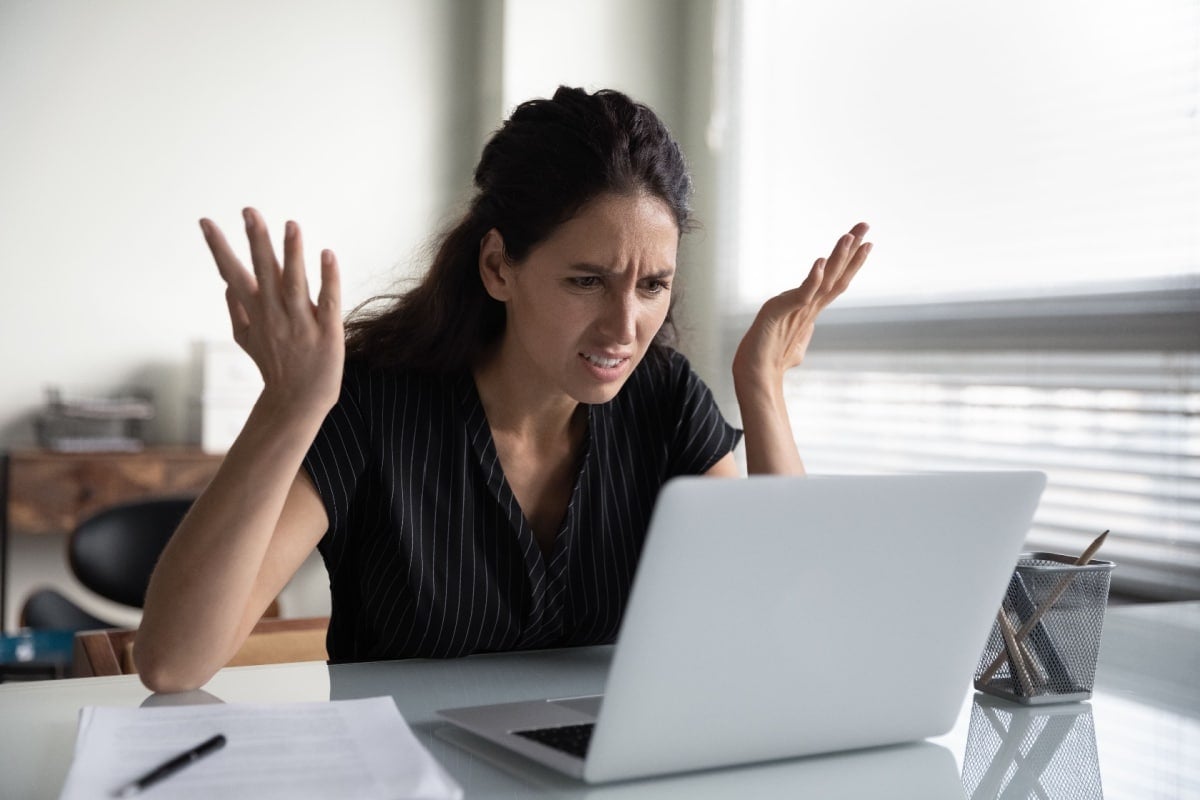
Well run websites will always have a Terms of Service, typically found in the footer of every page. Our sites, FODMAP Everyday® and The Queen Zone™, have the following within the Terms of Service:
“No AI: The owner of this website does not consent to the content on this website being used or downloaded by any third parties for the purposes of developing, training or operating artificial intelligence or other machine learning systems (“Artificial Intelligence Purposes”), except as authorized by the owner in writing (including written electronic communication). Absent such consent, users of this website, including any third parties accessing the website through automated systems, are prohibited from using any of the content on the website for Artificial Intelligence Purposes. Users or automated systems that fail to respect these choices will be considered to have breached this Agreement.”
Despite this being present, our content is being used by AI systems. Just recently I asked an AI system to give me a recipe and image for “Fresh Mint Chocolate Chunk Cookies”. I asked for this specifically because we have a recipe, and it is not a common one. Indeed, the system gave me a recipe and image that was clearly derived from ours and noted us as a source. I challenged the AI system and pointed out that I was the owner of their source, and that they did not have permission to derive from my work. The system apologized and said they would not do it again. Then they did, when I checked again later on.
Sometimes It Is Easy To Tell

Here above is an example of a hand having too many fingers. AI often struggles with hands and fingers, so those are good details to inspect.
Images That Are Just…Wrong

It is these amazing images that are drawing folks in first, way before they get to a recipe, or studying “who” is bringing them the content. There is always something “off” with the images, if you know what to look for.
Often, they are too “perfect” in certain ways, but if you are not an actual baker, for instance, you might not think about the size of the raspberries in relation to the cake, above (which is supposedly an 8-inch cake). You might miss the finger count and hand contortions on the “person”. You might not think about the black speckles on the cobbler. (PS: we have seen AI systems sometimes do this when the prompt has asked for confectioners’ sugar; the systems don’t quite know how to handle it).
Apparently We All Eat Cupcake Wrappers

We have come across dozens of AI generated images of incredibly inviting looking cupcakes and muffins – with the paper wrapper eaten through. Dead giveaway.
The Case of The Disappearing Glass

AI systems seem to have problems recreating glass. Sometimes it disappears. Other times the food is both inside the glass and outside the glass container. This is not real life.
Real Videos Used To Deceive

AI accounts are using AI tools to create videos, as well as images, but in some instances, scammers are including real videos (made by others) on their websites and social media accounts. The AI content creators do this to bring a sense of realness to their brand overall. In addition, they are often using these videos of other human creators without permission.
In other cases, the videos are AI generated and are much more obvious than static images. Just take a listen. The voice-overs are robotic and usually easily detected as fake. This page has a video that is very fake sounding, plus, the words on the voice-over make no sense at all.
The Same Luscious Image Is Everywhere

Who doesn’t love peanut butter and chocolate? This AI pie has cropped up in dozens of places. Its look attracts thousands of users to Share and Comment. It is not real.
What To Look For In AI Images

- Perfection: Look for other-worldly “perfection”. If you have never seen something look so appetizing, be critical.
- Perspectives: Often perspectives will be off. The recipe calls for an 8-inch cake pan, yet the image shows 4 raspberries spanning the top. The math doesn’t add up; raspberries are not that big.
- Color: The color saturation is often overly intense.
- Textures: Look at textures. Very often they are not what they would be – or even can be – in real life.
- Inconsistencies: AI-generated images often have subtle inconsistencies, such as unnatural lighting, odd textures, or irregular patterns. Or a pattern in a crust or on a decorated cake might be too perfect.
- Background Anomalies: Check for background elements that look distorted or out of place. AI often struggles with complex backgrounds, resulting in noticeable flaws.
- Pattern: With a lot of AI baked goods, the colors, textures and patterns in the food do not actually exist in real life. Sometimes it is perfection, other times AI systems struggle with accuracy. The image above is covered with tiny black dots. Savvy observers have noticed that AI systems have trouble handling a dusting of confectioners’ sugar, and it often translates it like this.
- Asymmetry: Human faces typically have slight asymmetries. AI-generated faces might appear too perfect or symmetrical.
- Irregularities in Eyes, Teeth, and Hands: Look closely at eyes, teeth, and hands as AI might render these with anomalies, like mismatched eye colors or uneven teeth. Fingers or fingernails can be odd, and extra hands pop up here and there.
- Image Does Not Match Recipe: Look at the image and take a glance at the recipe. Do the ingredients called for line up with the image?
- The Image Is Everywhere: When one of these scammers comes up with a luscious image, they are going to use it as many times as they can, across what are often a multitude of Facebook pages and sites run by the same people.
#3: Ingredient, Instruction & Text Issues
AI struggles with providing clear, accurate directions. After all, the AI system has never baked a brownie in its “life”! There will also be spelling errors, grammatical errors, strange choice of words or sentence structure – and of course, when the ingredients do not match the directions, and/or none of the text matches the images. This happens quite a bit.
The ingredients and directions are not going to help you make the food as shown. Well, now you know it can’t, because the food doesn’t exist.
AI Generated Text Red Flags

AI produced text is getting better, but you can still find grammatical and spelling errors. At the very least, even if it is proper language, they will be poorly edited.
Some sentences might have faulty structure; words will be missing. Here are some examples: “What is crockpot?”; “This recipe makes delicious brownies for you and elaborate parties”.
Inconsistencies Between Image & Overlay Text

The graphic above shows quite clearly that the “recipes” were slapped together. These AI images do not match the text overlay. Do not trust a page or site like this.
What To Look For In AI Recipes and Text Overlays
- Detail and Clarity: Authentic recipes provide clear, detailed instructions. AI-generated ones might be vague or overly simplistic, lacking specific cooking times, temperatures, and methods.
- Choice of Words & Sentence Structure: Every now and then a completely nonsensical choice of words pops up.
- Flowery Language: We often come across way over the top language; it will not sound like the way we speak in real life.
- Spelling & Grammar: Misspellings can happen on any page, but AI generated content is often riddled with spelling and grammatical errors.
- Step-by-Step Guidance: Look for comprehensive step-by-step instructions. If a recipe simply says “mix everything and cook” without elaboration, it’s likely AI-generated.
- Consistency: Check for logical proportions and serving sizes. AI-generated recipes might have erratic quantities, like an excessive amount of a single ingredient, which is impractical for cooking in real life.
- Realistic Measurements: Reliable recipes offer balanced measurements that make sense for the dish being prepared.
#4: Read The Comment Section
Sometimes the comments will have been turned off. Other times you will see that some perceptive users have called out the recipe/image to be AI.
In some instances, the group admin will answer those comments and admit they are AI and follow up with something like, “doesn’t it look amazing?” Yet, even after that, consumers are duped and continue to ask for the recipe and declare how fantastic the “recipe” looks.
Private Chat Invites
And then there are times the admins answer commenters by inviting them to private chats; this is a big red flag and typically means they will aggressively lure you into a sales funnel of some sort, or something not as obvious, but still unsavory and unethical – and most likely monetizable for them.
Source Verification

Reputable Platforms: Authentic recipes are often found on reputable culinary websites or apps. Verify the source and check for the credibility of the platform. Stanley Tucci does have an official Facebook page – and it isn’t the one mentioned above.
Brands such as Epicurious is known for its authenticity, as is America’s Test Kitchen.
Nutritional Information
Availability and Accuracy: Genuine, human-generated recipes often include nutritional information. If the nutritional details are missing or seem unrealistic, it might be a sign of a fake recipe.
Metadata Examination
- File Metadata: Check the metadata of the image file. Metadata is the hidden information of an image that tells you when the image was taken, what kind of camera was used, etc. AI-generated images might have metadata indicating the use of specific software tools or generative models.
- Absence of EXIF Data: Many AI-generated images lack EXIF data (Exchangeable Image File Format), which is usually present in photographs taken by digital cameras. Read more about EXIF data and how you can check.
Reverse Image Search
- Reverse Search Tools: Use reverse image search tools like Google Images or TinEye to check if the image appears elsewhere online. AI-generated images might not have a history or presence on the web.
- Check for Alterations: Reverse search can also help identify if the image is a manipulated version of an existing photo.
Watermark and Attribution
- Watermarks: Some AI-generated images come with watermarks from the generating platform. Look for these marks as an indication of AI creation.
- Attribution Information: Reliable platforms providing AI-generated images often include attribution information. Verify the source and attribution to ensure authenticity.
Who Benefits By AI Recipe Creation?
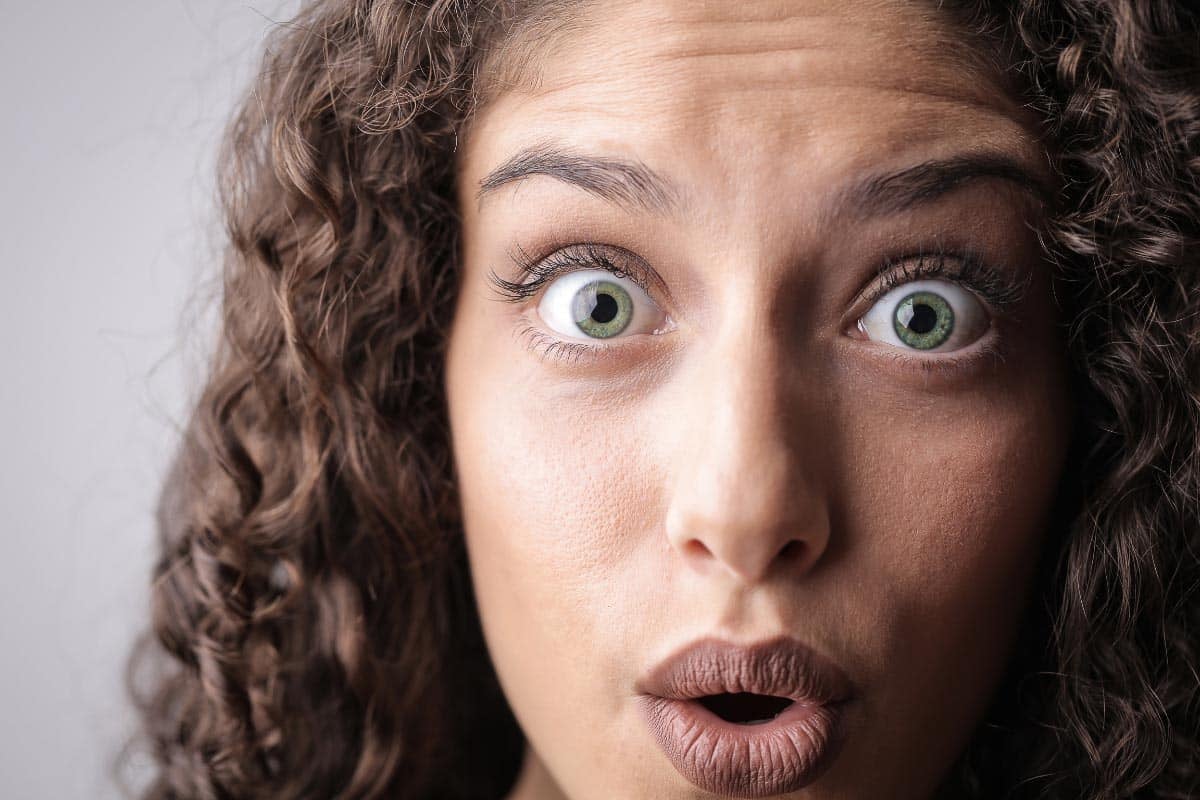
We find these AI accounts on social media (most often Facebook and Instagram) with thousands, often tens or hundreds of thousands of followers. There is sophisticated data collection happening in the background, of which you might not be aware. By Liking these posts, and Commenting, and Sharing, you are feeding their system.
Unsuspecting people (maybe you) see images like the ones above and think, “that looks amazing; I am going to comment and share the post.” Folks come to the group/page, begin commenting and sharing on their own.
The group admins will sometimes ask for comments. They will often indicate that you will not see their content anymore if you don’t make a comment.
By gathering comments and shares, the Facebook algorithm (as an example) rewards them by showing their post to more people. This is how exponential growth happens.
At the same time, legitimate content creators are having their content throttled, and Facebook will not explain why.
One theory we have is that the scammers are very often running ads. Facebook makes money from the ads, therefore they will be supportive of those pages, as opposed to pages that do not run ads, and do not generate the same amount of traffic.
Facebook wants you to stay on Facebook. If you have pretty pictures to look at, they do not care if they are real – if they keep you on the platform.
What Are They Selling? How Do They Make Money?
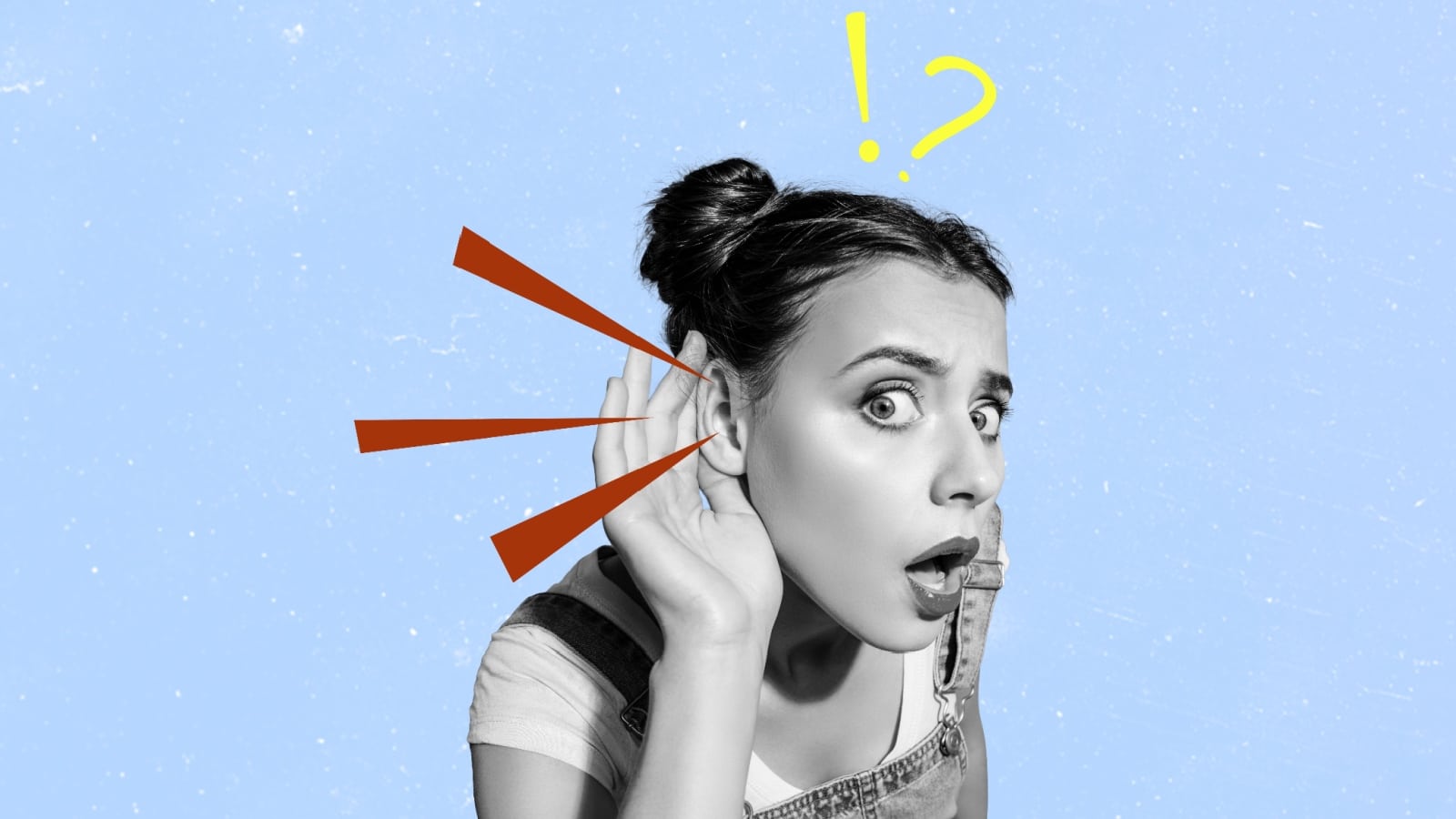
Sometimes they are just collecting data on you, which can be unscrupulously sold. Other times these pages and groups are used as the top of a sales funnel. Often, we see those running the groups inviting commenters to join them in private messaging; sales and other activity can occur there.
Once a large community is built up on Facebook, they can sell the group to others. Many of the recipes also take you to a website to see the complete version, or others like it, and that page might be monetized with ads.
All this while cheating the real content creators upon whom their AI content is created.
AI Generated Cookbooks
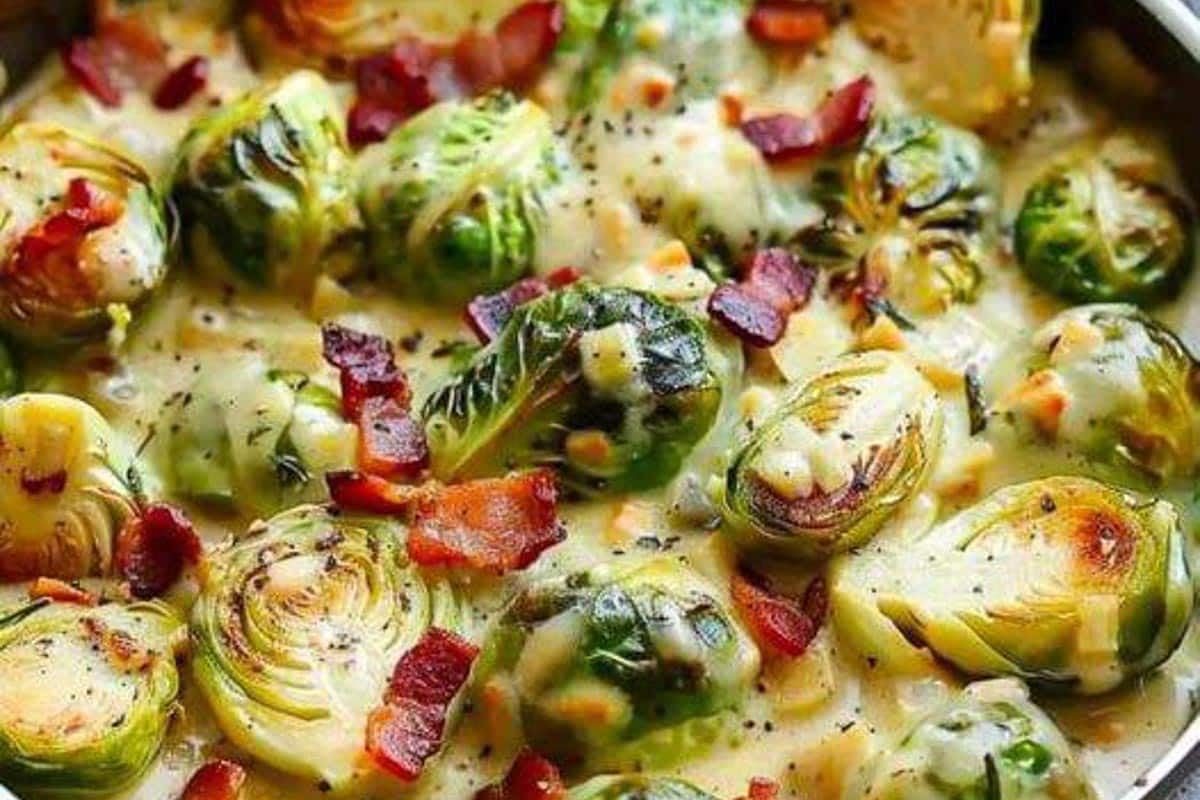
This is an area unto itself that is rife with problems. We have seen books pop up that are completely AI generated. The same problems exist as discussed above, such as the “author” not actually existing. They also very often take real recipes from content creators, package them in a cookbook and sell them, without any compensation going to the original recipe developers, who have not given permission.
There is a movement towards getting Amazon to crack down on these stolen recipes and misrepresented cookbooks, but we will have to see what the future brings.
Practical Tips for Verification of AI Recipes

Here is a checklist for verifying whether recipes are real or not:
- Cross-Reference Information: Before using a recipe or trusting an image, cross-reference it with multiple sources. Genuine content is likely to appear consistently across reputable platforms. In other words, my own recipes can be found on our site, our Facebook business page, and our Instagram account, but not on accounts belonging to “other” people. We often see the same AI images and recipes presented by multiple “authors” and “brands”.
- User Reviews and Feedback: Check user reviews and feedback for recipes. Positive reviews and high ratings are good indicators of authenticity, however, AI is now using bots to provide ratings and comments, so this is becoming less helpful.
- Stay Informed: Keep yourself updated on the latest developments in AI technology. Understanding how AI tools work can enhance your ability to detect AI-generated content.
- Critical Thinking: Always approach online content with a critical mindset. Question the plausibility and reliability of what you see and read.
- “The Look”: One of the reasons we included so many images and graphics in this post was so you could see the similarity in “look”, to better identify these on your own. Can you see how many of these have similarities?
AI, The Low FODMAP Diet & Recipes
For those of you following the low FODMAP diet, please read this section. (This article originated on FODMAP Everyday®, so we know some of you are following this medically directed diet). Hopefully you know that the low FODMAP diet is a clinically proven diet and not a fad. This means that there are very clear scientific parameters that define the diet. Since the inception of the diet, we have been dealing with a lot of misinformation regarding the diet from all corners of the Internet.
AI systems teach themselves based on information that exists on the Internet. Because so much of the information about the low FODMAP diet online is out of date and/or wrong, much of what we have seen presented by AI is as well.
We strongly suggest that you do not use AI for help with the low FODMAP diet. This means not using AI systems to help you create recipes, shopping lists, meal plans, etc.
Please stick with primary sources such as Monash University and FODMAP Friendly, and resources such as FODMAP Everyday®, which create evidence-based recipes and content by trained FODMAP and medical professionals.
The Takeaway
The increasing prevalence of AI-generated recipes and images necessitates a keen eye and critical thinking to distinguish between genuine and artificial content. Why? Two main reasons. 1) Much of the AI content is horrible, in that the recipes will not work, and 2) much of the AI content is being generated based upon that created by real content creators, who are not being compensated (stolen content). Thirdly, if one is following a medically directed diet, such as the low FODMAP diet, the information we have seen that is AI generated has most often been incorrect.
By paying attention to ingredient combinations, instruction quality, proportions, and source credibility for recipes, and analyzing details, metadata, and facial features for images, you can effectively spot AI-generated content. Utilize verification tools and stay informed about AI advancements to navigate the digital landscape confidently. Ensuring the authenticity of online content helps maintain quality and trust in the information you consume.
What Can YOU Do?
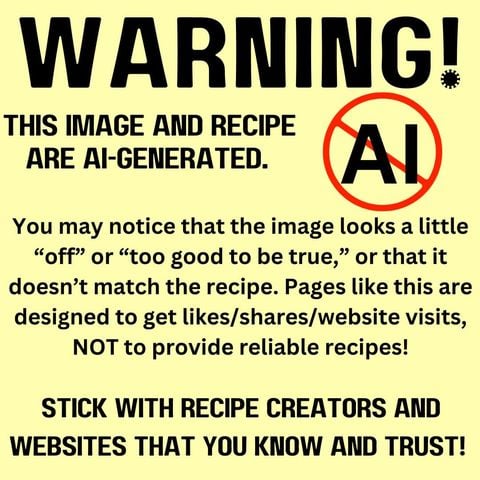
Spread the word. Share this article. Be critical. Support genuine human content creators. The next time you are about to share a “gorgeous” recipe link, pause and take the time to assess. AI does hurt content and recipe creators like us. And take a look at the image above, created by blogger friend Chenée Lewis. Feel free to share it, with attribution to her. Post it on AI pages. It is a bit like whack-a-mole, but every little bit of education counts.
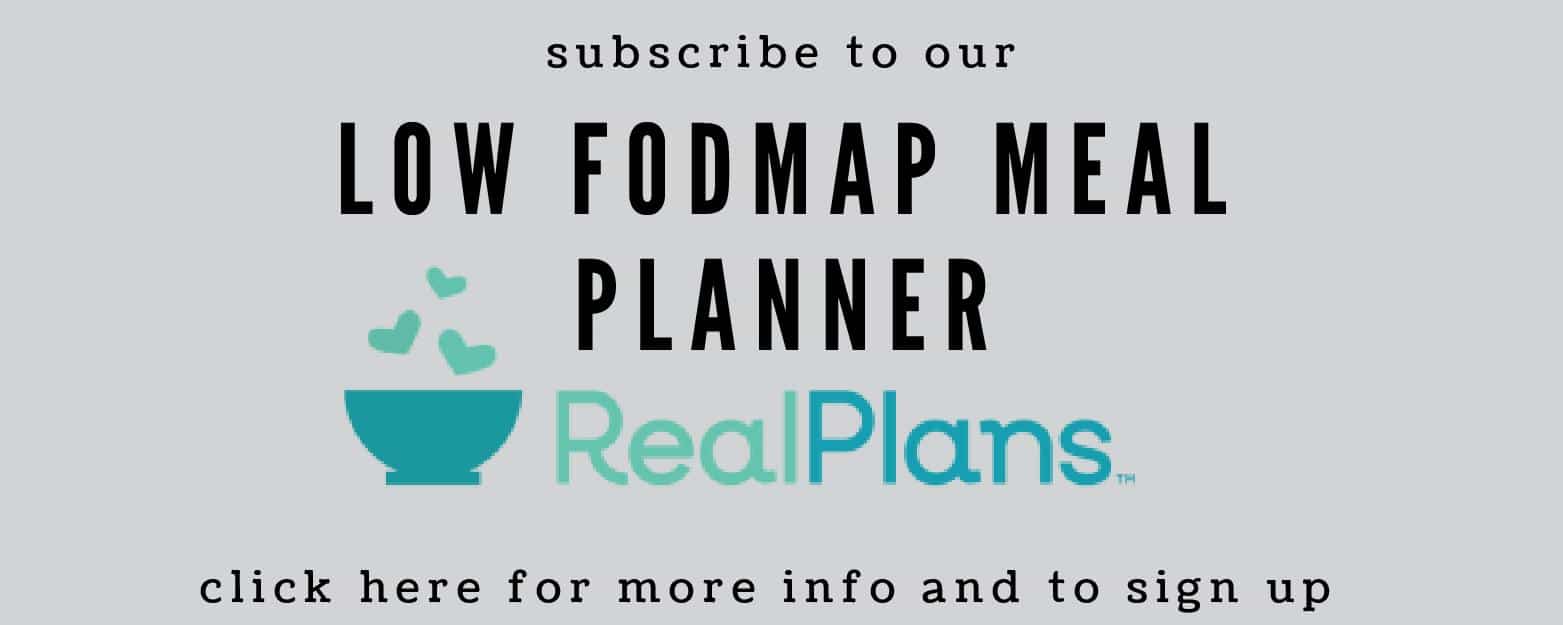


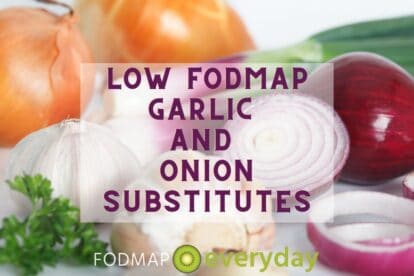
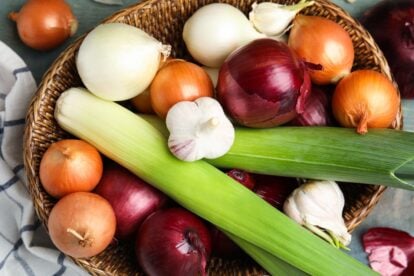
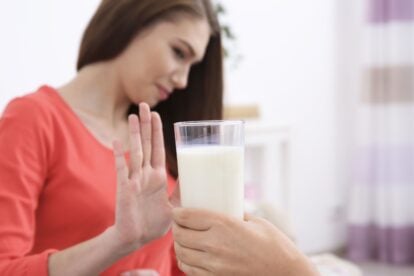
Hi to my favorite recipe creators! I’m so sorry this is happening to you two, and I’m sure the same thing is happening to many others. I wish AI was not a “thing” at all. It’s actually pretty scary, if you research what it might become. Our son is a software engineer and years ago he shared a huge research packed writeup on AI. Anyway, I appreciate you so much and rarely do I search for a random recipe, but I go to my favorite sites, like yours. Thank you for this informative article, and I will spread the word!